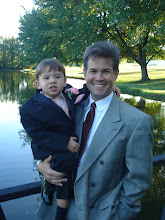When I first started to seriously invest I thought that the only thing that you really needed to do to be successful was pick a great stock and let it ride. Now I know that stock selection, while surely an important part of the recipe, is not the sole ingredient. There are certainly many moving parts to a good trading system and I think one critically overlooked area is portfolio management. In this post I would like to share a simple yet incredibly effective method for managing your positions and protecting yourself in dangerous market.
Before we go any further, I want to be upfront and say that this is the exact method that got me out of the market in its failed rally in December 2007 and August 2008. I managed to side step the worst part of the market’s terrible declines and sit comfortably in cash watching these historic events unfold. This strategy saved me tens of thousands of dollars and preserved much of my nest egg.
The Rule of Three’s is a simple method that protects you from a floundering market or a flawed trading system. Just like in baseball it is three strikes and you are out. I picked this method up from IDB and a variation found in Alexander Elder’s book “Entries and Exits”. Here is how it works:
1. Once my trading system indicates that the general market has had a change in trend, I make my first stock purchase. You can use this to go either long or short as long as you are on the correct side of the trend.
2. I make my first pilot buy based on my selection criteria. A pilot buy is a percentage of the total position that I hope to ultimately establish. The purpose of the pilot buy is to confirm that my judgment is correct and if it isn’t it allows me to get out of my mistake as cheaply as possible.
3. The initial pilot buy can be anywhere from 1/3 to ½ of the total position. I average up as the price increases. For example, if I have $10,000 to invest I make an initial buy with $5,000.
4. If the stock shows good action and the price increases 2-3% I make another buy of $3,000. Finally I round out the rest of my position if it appreciates another 2%.
5. If the initial pilot buy declines 3-4% I cut my loss and get out. I don’t hope, pray or argue with the market. I know that my biggest winning stock picks have always started out as winners and normally do not decline in price. My losers start as losers so I want to get out as cheaply as possible.
6. I normally, but not always, try to build out one full position or get stopped out before moving on to a second pick. Now I repeat the process twice more once an outcome as been reached on the first position.
7. If I get stopped out three times in a row, I stop all trading activity for three weeks.
The final point is the real key. Stopping and taking a breather is my system's safety valve and it serves to protect me from greater damage. The natural question is, why stop?
Three strikes in a row means something is either wrong with my trading selection or the market in general. This is an indication that I need to take time to review my activity or give the market time to sort itself out.
In practice, following this rule can be a challenge because after all I want to make money to achieve my own personal goals. I want these goals met now, but I know that the market operates on its own scale. This rule protects me from me.
Now I want to demonstrate how this rule protected me from the great fall that began in September 2009. Executing this procedure forced me into 100% cash and allowed me to watch the subsequent market crash with a macabre fascination.
At the beginning of August 2008 the market logged a follow through day. This indicated a potential change in market trend and gave the green light to start buying high quality stocks as they broke out of sound bases. One such stock I had been following for quite a while was retailer Buckle (BKE).
The stock has a strong mix of fundamental and technical indicators and I thought it could be an early leader for a new rally. I made several attempts to purchase the stock only to get stopped out. Finally, my lack of success forced me out of the market two weeks before Labor Day.
Labor Day week the general market seemed under pressure and the subsequent rally failed. I was 100% in cash at this point. On September 29th 2008 the NASDAQ alone lost nearly 200 points and ushered in many terrible weeks for the market and the global economy. On those horrible days I took satisfaction that I had followed my rules and protected my self from an event that I had know idea would happen.
Sunday, March 29, 2009
Subscribe to:
Comments (Atom)



